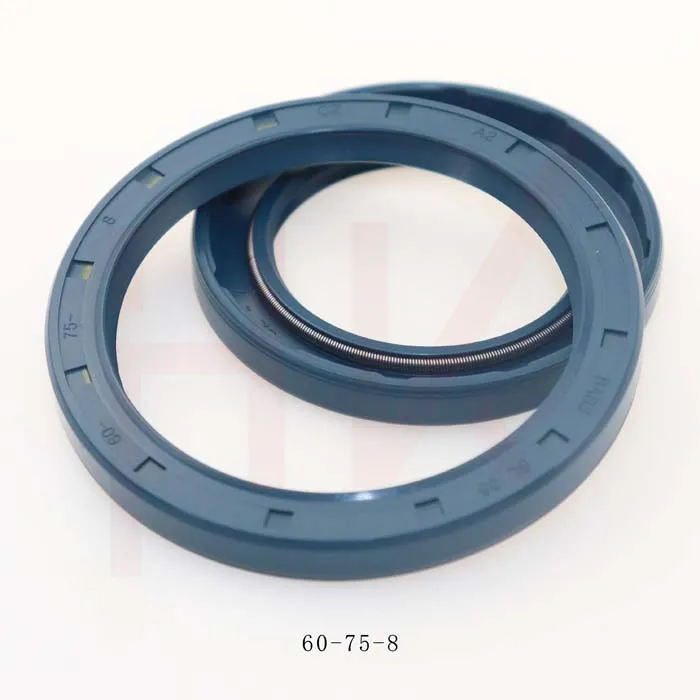Nov . 19, 2024 11:56 Back to list
Hydraulic Ram Wiper Seals for Enhanced Performance and Durability in Fluid Systems
The Importance of Hydraulic Ram Wiper Seals
Hydraulic systems play a crucial role in various industrial applications, automotive engineering, and machinery operations. One essential component in these systems is the hydraulic ram, which is responsible for converting hydraulic energy into mechanical force. A significant part of ensuring the efficiency and longevity of hydraulic rams is the implementation of effective wiper seals. This article explores the importance of hydraulic ram wiper seals, their functionality, and their impact on system performance.
What Are Hydraulic Ram Wiper Seals?
Wiper seals, also known as scraper seals, are components designed to keep contaminants out of hydraulic cylinders while preventing hydraulic fluid from leaking. They are strategically placed at the open end of a hydraulic ram, where they encounter various external elements such as dirt, dust, moisture, and debris. The primary function of these seals is to maintain the integrity of the hydraulic system, ensuring that the internal components operate smoothly and efficiently.
The Functionality of Wiper Seals
Wiper seals are engineered to function under challenging conditions. When a hydraulic ram extends and retracts, the seal wipes the surface of the rod, removing any particles that could compromise the system's performance. This wiping action not only prevents contamination but also protects the rod from scratches and wear, thereby extending its lifetime.
Moreover, wiper seals are often designed with specific materials and profiles to cater to different operating environments. Common materials include polyurethane, rubber, and sometimes even specialized composites, each selected based on factors such as temperature resistance, chemical compatibility, and abrasion resistance. This adaptability makes wiper seals suitable for various industries, including construction, agriculture, and manufacturing.
hydraulic ram wiper seal

The Consequences of Wiper Seal Failure
The failure of hydraulic ram wiper seals can have significant repercussions. When a seal deteriorates or becomes ineffective, contaminants can enter the hydraulic system, leading to increased wear and tear on the internal components. This can result in hydraulic fluid leaks, reduced efficiency, and ultimately, system failure. In high-stakes environments, such as in aerospace or medical applications, seal failure can lead to catastrophic consequences, underscoring the necessity of regular maintenance and timely replacement of wiper seals.
Preventative maintenance practices can greatly reduce the risk of seal failure. Routine inspections of wiper seals for signs of wear, such as cracking, hardening, or loss of elasticity, are essential. Additionally, ensuring that the hydraulic ram is regularly cleaned and that the work environment is as free of contaminants as possible can also prolong the lifespan of the wiper seals.
Enhancing System Performance
Beyond their protective role, effective wiper seals can enhance overall system performance. By preventing contamination, they help maintain the viscosity of hydraulic oil, ensuring optimal operation. Furthermore, a well-functioning wiper seal can reduce hydraulic fluid consumption by minimizing leaks, leading to cost savings over time. This is particularly important in large-scale operations where even minor fluid losses can accumulate into significant expenses.
Conclusion
In summary, hydraulic ram wiper seals are critical components vital to the reliability and efficiency of hydraulic systems. Their primary function of keeping contaminants at bay not only protects the hydraulic ram but also contributes to the overall performance and longevity of the system. By investing in high-quality wiper seals and adhering to proper maintenance routines, industries can ensure the smooth operation of their hydraulic systems, maximizing productivity and minimizing unforeseen downtime. In a world where machinery reliability is paramount, the importance of these seemingly small but crucial components cannot be underestimated.
-
TCN Oil Seal Metal Ring Reinforcement for Heavy Machinery
NewsJul.25,2025
-
Rotary Lip Seal Spring-Loaded Design for High-Speed Applications
NewsJul.25,2025
-
Hydraulic Cylinder Seals Polyurethane Material for High-Impact Jobs
NewsJul.25,2025
-
High Pressure Oil Seal Polyurethane Coating Wear Resistance
NewsJul.25,2025
-
Dust Proof Seal Double Lip Design for Construction Equipment
NewsJul.25,2025
-
Hub Seal Polyurethane Wear Resistance in Agricultural Vehicles
NewsJul.25,2025
-
The Trans-formative Journey of Wheel Hub Oil Seals
NewsJun.06,2025
Products categories
















